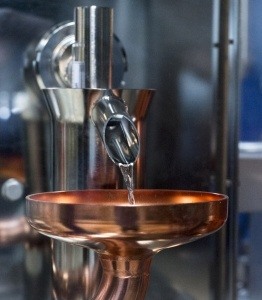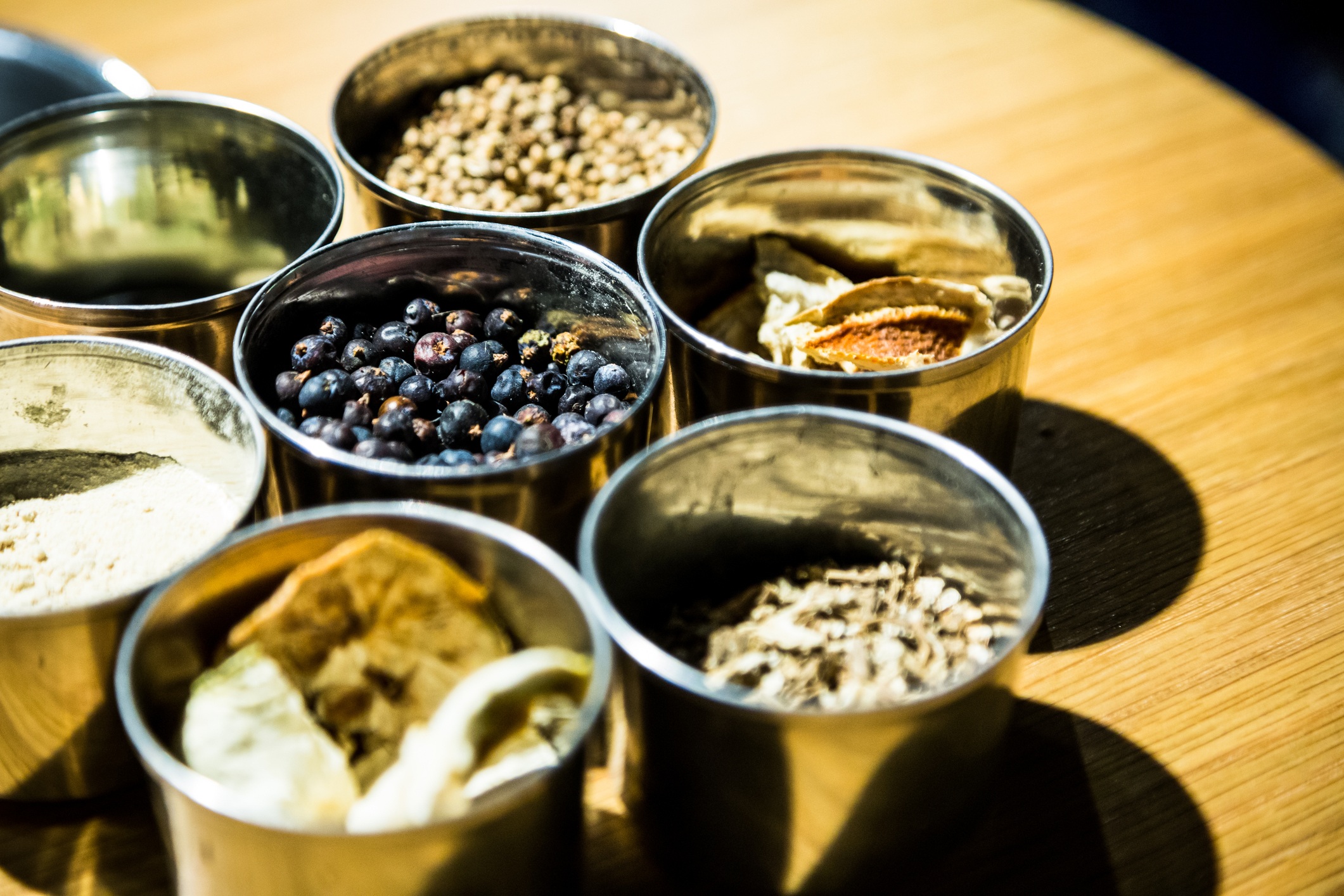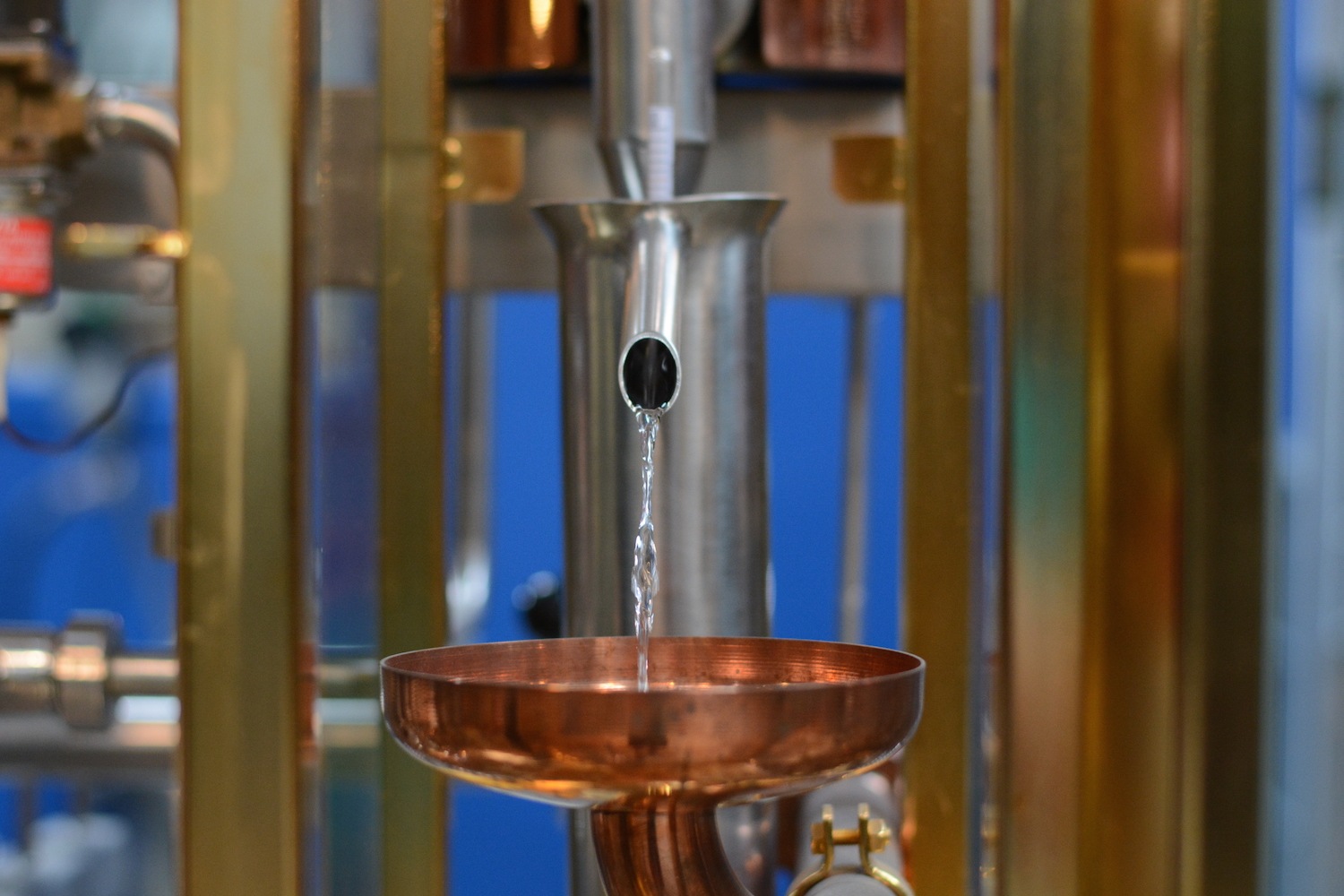
Want to learn more about how your gin is made? We’ve put together a list of essential distilling terminology, from the botanicals to the base spirit and beyond.
Making gin is a true artform—and for the passionate ginthusiasts out there, learning the ins-and-outs of distillation is an excellent way to better understand what’s in your glass. We’ve compiled a list of essential distilling terminology to help get you started. Brush up on the basics—and pour yourself a nip of gin to help bring the lessons to life.
(Psst: if you want to supplement your knowledge with an in-person distillery visit, don’t forget that we also offer tours of our West London HQ several times a week. Book to go behind-the-scenes, admire our gleaming stills, and indulge in a tutored tasting).
Pot Still
When it comes to essential distilling terminology, it doesn’t get much more important than this. Pot stills are distinct from column stills in that they work on a batch basis in lieu of continuous production; thanks to their construction, they’re excellent at producing richly flavoured, well-rounded spirits. The fact that our stills are made of copper is also significant, beyond the aesthetics: the metal helps evenly distribute heat, encourages the production of flavourful esters, and removes unpleasant sulphur compounds, leading to a smoother and more elegant final product.
Botanicals

Gin botanicals are what give the spirit its unique character.
What separates gin from vodka? In essence, the botanicals. Juniper is the primary (and legally mandated) botanical with which gin is flavoured, but creative distillers can also add an array of herbs, spices, citrus, and other ingredients to build a custom flavour profile. The botanicals in our London Dry Gin, for instance, range from angelica root and coriander seeds to cassia bark, ground almonds, and Seville orange peels; each adds its own complexity to the finished gin.
Base Spirit
The gin-making process typically begins with a high-proof base spirit, or neutral spirit, made from grain or other sources. This is then redistilled along with the botanicals to produce gin.
Maceration
In order to imbue our gin with the richest and boldest flavours possible, we add our botanicals to the stills and let them macerate overnight, prior to distillation. Our London Dry Gin production begins with a 14-hour maceration; for V.J.O.P., the botanicals will steep for up to three days.
The Heads
Each distillation can be divided into three parts: the heads, the heart, and the tails (more on those last two in a moment). The heads, sometimes known as the foreshots, comprise the first part of each distillation. Depending on the quality of the spirit being distilled, the heads can contain harsh chemical compounds like acetone or toxic methanol, making them undesirable for gin production. If the base spirit is of a higher quality, the heads may still contain deposits left behind by a previous distillation. Therefore, the distiller will separate them out, and either discard them or redistill them later.
The Heart

At Sipsmith, we only take a narrow sliver of the heart cut, making for a refined, high-quality gin.
The heart, or the middle cut, follows the heads, and is the highest-quality part of the distillation. At Sipsmith, our distillers take only a very slim heart cut to use in our gin, which ensures the resulting spirit is flavoursome and buttery smooth.
The Tails
The final part of each distillation is known as the tails, or the feints. The tails are typically low in alcohol and contain unpleasant sulphates and fatty acids that feel heavy and oily on the palate. As with the heads, the tails are also separated out and either redistilled or discarded.
One-Shot Method
At Sipsmith, we distil our gin using the “one-shot method.” What this means, in a nutshell: we make each batch of gin by distilling a neutral base spirit with the appropriate proportion of flavourful botanicals. In contrast, some distilleries use the “multi-shot method,” and produce an intense gin concentrate that is then mixed with a neutral spirit. As the base spirit is not redistilled in the multi-shot method, the result is typically a gin of less refinement and nuance, so we stick with the one-shot method—even though it’s a more costly and laborious way of operating.
Feature image © coldsnowstorm/iStock
